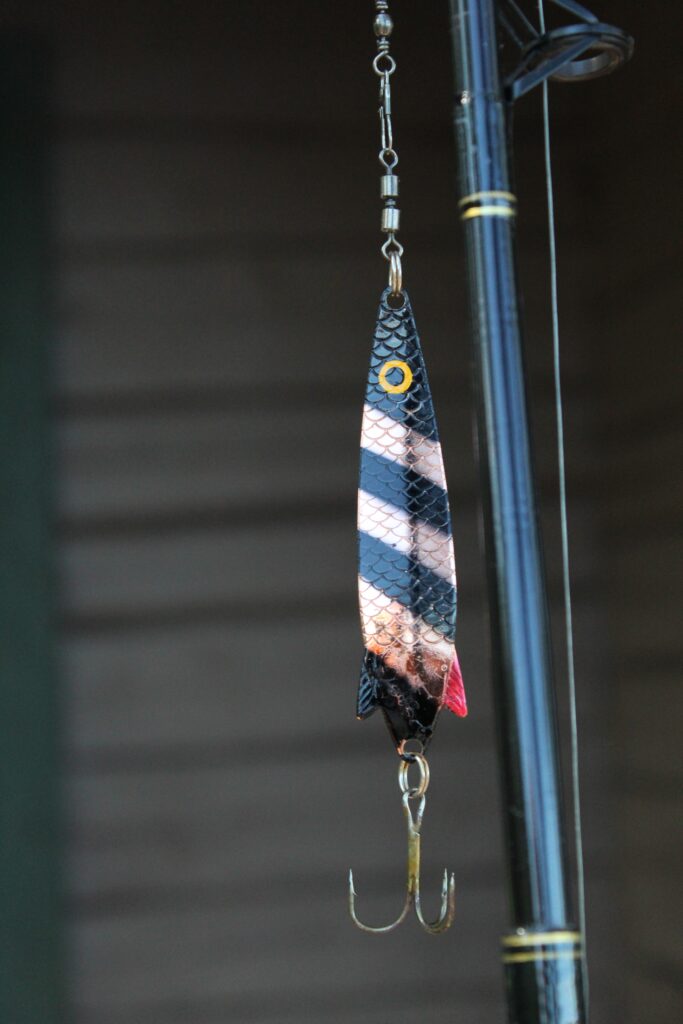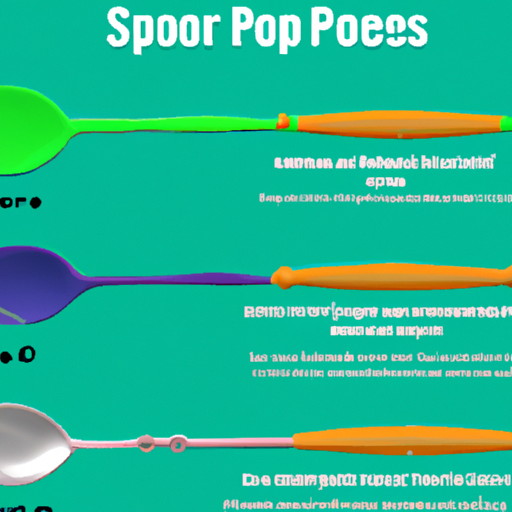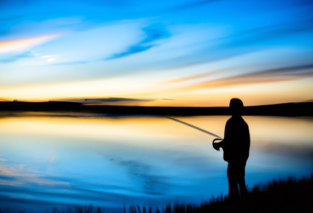If you’ve ever been intrigued by the art of fishing and want to try your hand at it, look no further than the “Essential Guide To Fishing Spoons For Beginners.” This comprehensive guide is perfect for anyone starting their fishing journey and wanting to learn the ins and outs of using fishing spoons. Whether you’re a complete novice or have some experience, this guide will provide you with all the essential knowledge and techniques you need to successfully catch fish with spoons. Get ready to reel in unforgettable fishing experiences as you embark on this exciting fishing adventure!

Choosing the Right Spoon
When it comes to choosing the right spoon for fishing, there are a few factors you should consider. The size of the spoon is one of the most important aspects to evaluate. The size of the spoon you select will depend on the type of fish you are targeting and the fishing conditions.
A smaller spoon is best for targeting smaller fish, such as trout or panfish. It will mimic the size of the bait they usually go after. On the other hand, if you are targeting larger fish like bass or northern pike, a larger spoon will be more effective. It will create a bigger profile in the water and attract their attention.
Aside from the size, you should also consider the shape of the spoon. There are various shapes available, each with its own unique action in the water. The most common shapes include the classic teardrop shape, the flutter spoon, and the weedless spoon. Experimenting with different spoon shapes will help you determine which one works best for your fishing style and target species.
Lastly, don’t forget to think about the color of the spoon. Different colors can attract different fish species. For example, silver or chrome spoons mimic baitfish and are excellent for attracting predatory fish like bass or pike. On the other hand, gold spoons are known to be effective for trout fishing. Consider the water clarity and the preferences of your target species when selecting the color of your spoon.
Understanding Spoon Materials
Spoons are made from various materials, each offering unique benefits and characteristics. The two most common types of metal spoons are stainless steel and brass. Stainless steel spoons are durable, rust-resistant, and often come with a shiny finish. Brass spoons, on the other hand, are known for their ability to produce a loud and distinct clacking sound, which can attract fish from a distance.
If you prefer using synthetic materials, plastic spoons are a great option. They are lightweight, affordable, and come in a wide array of colors and patterns. Plastic spoons also allow you to experiment with different actions in the water due to their flexibility.

Mastering Spoon Techniques
Fishing with spoons requires a good understanding of the different techniques you can employ. Casting and retrieving is the most commonly used technique. Simply cast your spoon out into the water and retrieve it back to the shore or your boat. The key to success with this technique is to vary your retrieval speed and experiment with different actions to imitate the movement of injured baitfish.
Jigging is another popular technique for using spoons. It involves jerking the rod tip upward to create an erratic motion that mimics wounded prey. This technique is particularly effective when fishing in deeper water or when the fish are less active.
Trolling with spoons is a technique commonly used when fishing from a boat. It involves dragging the spoon behind the moving boat, usually at a slow to medium speed. Trolling allows you to cover a larger area and is especially effective for targeting species like lake trout or salmon.
Rigging Your Spoon
To ensure success when fishing with spoons, it is essential to rig them properly. Start by choosing the right line for your fishing conditions. Monofilament line is a popular choice for spoon fishing due to its versatility and high knot strength. However, if you are targeting larger fish or fishing in heavy cover, consider using braided line for added strength and durability.
Adding leaders and swivels is important when using spoons. A leader is a length of line that is attached to the spoon to prevent the fish from seeing your mainline. It also provides abrasion resistance against the fish’s teeth or sharp structures in the water. Swivels are used to prevent line twist, which can occur when the spoon spins in the water. A barrel swivel attached between the mainline and the leader will help keep your line tangle-free.
Finally, selecting the proper hook is crucial for spoon fishing. Treble hooks are the most common choice as they provide a higher hooking rate. Make sure to choose the appropriate size based on the spoon you are using and the size of the fish you are targeting. Consider using barbless hooks if you plan on catch-and-release fishing to minimize harm to the fish.

Basic Spoon Fishing Tips
To improve your chances of catching fish with spoons, it is important to follow some basic fishing tips. First and foremost, research the fishing spot you plan to visit. Understanding the habitat, feeding patterns, and behaviors of the fish species you are targeting will increase your chances of success.
Varying your retrieval speed is another effective technique. Some days fish are more active and may prefer a faster retrieve, while on other days, a slow and steady retrieve may be more successful. By experimenting with different retrieval speeds, you can determine what works best for the fish on any given day.
Don’t be afraid to experiment with different spoon actions either. Try twitching your rod tip to create a darting motion or add pauses during your retrieve to imitate an injured baitfish. Sometimes a simple change in spoon action can make all the difference in attracting a bite.
Targeting Specific Fish Species
Different fish species have different preferences when it comes to fishing spoons. Let’s take a look at how spoons can be effectively used to target bass, trout, and walleye.
When bass fishing with spoons, it is best to use larger spoons that mimic the size of the baitfish bass typically feed on. Cast your spoon near underwater structures or vegetation where bass are likely to hide. Experiment with different actions to trigger their predatory instincts and entice them to strike.
Trout fishing with spoons is also popular and effective. Start with smaller spoons and target areas with fast-moving currents or deep pools. The flash and vibration of the spoon will catch the trout’s attention, and the erratic action will trigger their predatory response.
Walleye fishing with spoons can be highly successful, especially in deep or murky waters. Use spoons that imitate the walleye’s preferred prey, such as shad or perch. Troll your spoon along drop-offs, submerged points, or near weed edges to increase your chances of hooking a walleye.

Maintaining and Caring for Spoons
To ensure your spoons continue to perform well and attract fish, it is important to properly maintain and care for them. Regularly inspect your spoons for any signs of damage, such as bent hooks or dents in the metal. Replace damaged hooks and reshape any bent spoons to maintain their effectiveness in the water.
Cleaning your spoons after each use is also essential. Rinse them with freshwater to remove any debris or saltwater that may have accumulated. Dry them thoroughly before storing to prevent rust or corrosion.
When it comes to storing your spoons, it is best to keep them in a tackle box or organizer. This will protect them from damage and keep them organized for easy access on your next fishing trip.
Spoon Fishing Accessories
There are various accessories that can enhance your spoon fishing experience. Adding attractants to your spoons can increase their effectiveness by adding scent and flavor. Choose attractants that are specifically designed for fishing and apply them to your spoon before casting.
Using snap swivels is another accessory that can make your spoon fishing more efficient. Snap swivels allow for quick and easy changes of spoons without the need to re-tie knots. They also help reduce line twist, allowing your spoon to move more naturally in the water.
Employing spoon retrievers is a handy accessory to have when fishing with spoons. Spoon retrievers are designed to retrieve your snagged spoon without the need for cutting the line or losing your lure. They can save you both time and money by retrieving your spoon from underwater obstacles.

Safety Precautions for Spoon Fishing
While fishing with spoons is generally safe, it is important to take some precautions to ensure a safe and enjoyable fishing experience. Firstly, always wear appropriate fishing gear, including a life jacket if fishing from a boat or near deep water. Protect yourself from the sun by wearing a hat and applying sunscreen.
When handling spoons, keep the hooks covered to prevent any accidental injuries. Use hook covers or store your spoons in a tackle box when not in use.
Lastly, be aware of your surroundings at all times. Pay attention to other anglers and boaters in the area to avoid any collisions. Respect the environment and be mindful of any wildlife or sensitive habitats.
Frequently Asked Questions (FAQs)
What are some common mistakes to avoid when using fishing spoons?
Some common mistakes to avoid when using fishing spoons include using the wrong size or color for the target species, using improper spoon action or retrieval speed, and not properly rigging the spoon with a leader and swivel. It is also important to avoid using damaged or rusty spoons, as they may be less effective in attracting fish.
How do I choose the right spoon for different fishing conditions?
To choose the right spoon for different fishing conditions, consider the size, shape, and color that best matches the target species and the water clarity. In clear water, choose spoons with a more subtle color and smaller size. In murky or stained water, opt for brighter colors and larger sizes to attract fish. Also, consider the weather, time of day, and the fishing spot’s characteristics when selecting the right spoon.
Can I use spoons in saltwater fishing?
Yes, spoons can be used in saltwater fishing. Stainless steel spoons are a popular choice for saltwater fishing as they are durable and resistant to rust. When fishing in saltwater, it is important to rinse your spoons thoroughly with freshwater after each use to remove any saltwater residue that can cause corrosion.





